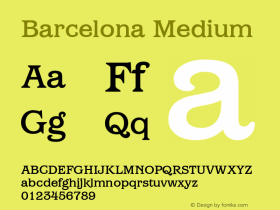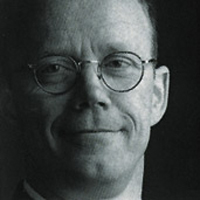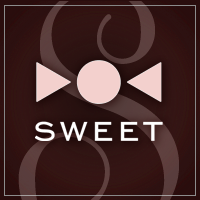
As Joan Spiekermann revealed in the first interview celebrating the twentieth anniversary of FontShop, the pioneering vendor of digital type originally was run by two people: Joan, and Petra Weitz, the Managing Director of FSI FontShop International. Since the founding of FontShop, Petra has been at the helm, forging relationships with partners and keeping the business in line. While she continues her intimate involvement in the type community, she supports "her" basketball team — which also turned 20 this year —, and grooves to the warm beats of R&B, hip hop, and soul. Petra reveals how the fledgling company grew into the global operation it is today.
You worked with Joan in an English design agency in Berlin when she asked you to join FontShop just prior to the launch. What kind of work did you do at that agency, and what was your initial reaction to Joan's proposal?
I was assisting Joan and the Managing Director with all things admin; mostly learning by doing, as I had studied to be an English and History teacher. My direct involvement with the creative work was very limited; sometimes, just before a pitch, the designers would let me help stick adhesive letters on cardboard for their presentations, preferably in the early morning hours. Does it sound like the great fun it was? Eventually, when Joan left, I took over her job as office manager. I enjoyed the creative environment a lot but was basically ready to move on when Joan told me http://fontfeed.com/archives/celebrating-20-years-of-fontshop-with-petra-weitz/about FontShop. When she described to me what I would be doing at FontShop, I must admit I was definitely not tempted by the work itself. It sounded rather dull, but then I thought — "Hey, this is with Joan and Erik, cannot be boring for long". And I was spot on.
The roof of Weinhaus Huth peeking over the Berlin Wall. Photo by Erik van Blokland.
How were those first days and months when FontShop had started?
Challenging. I was pretty clueless with regards to fonts and typography, but fortunately this applied to many of our first customers as well. So we learned together, also in other respects. Paying with a credit card is only one example. Understanding and then explaining, sometimes justifying the rules of font licensing was also quite an issue — and it still is, actually. Not thinking in stereotypes was another. An elderly Bavarian printer learned to accept that women can indeed give tech support. And sometimes businesses offer more than you would expect: we added other products to our offering. The first were watches from Tibor Kalman's M&Co Design company in New York, really beautiful, unusual pieces of which we sold quite a few. One customer actually took offense and sent in his font order with a wordy protest that we should stick to our usual business, asking if we were trying to copy a well-known coffee roasting chain which had also started selling other products along with coffee. He ordered "under protest" because he could not get his fonts anywhere else (yes, FontShop was a cool idea!). So I went to this coffee roastery and sent him some beans along with his font package. I believe he was actually pleased. This coffee roasting chain is also still in business, by the way.

Weinhaus Huth, 1990. Weinhaus Huth is the only building in Potzdamer Platz, Berlin to survive both WWII and the Berlin Wall. Photo by Erik van Blokland.
Joan describes the first decisive moment was when FontShop sold five font packages in a single day. What were the next stages in the growth of FontShop?
Well, sales continued to grow nicely so we employed more people, steadily one after another. After 10 months we moved to Weinhaus Huth on Potsdamer Platz. Back then it was a solitary building right next to the Berlin Wall which had just come down. The people chipping away at it came in continuously to use the bathrooms, so in the end we had to lock our doors. Talking of locking doors. In the morning of April 1st, 1990 I got an urgent phone call from a colleague saying that I should come in immediately. The doors were wide open, and all our computers, printers etc. had been stolen. Sure, I said, pull the other one. Unfortunately it turned out it was no April Fool's joke, and to make matters worse we had no back-ups! It was a serious setback in an otherwise nicely thriving enterprise. We had lost all customer addresses, so we placed ads in magazines asking them to get in touch with us — which they did. We needed to replace hard-and software while the insurance company took its sweet time to cough up the money. It was a major nightmare.
Andreas Eigendorf, Technical Consultant, manning the FontShop booth at CeBIT. And indeed, Erik Spiekermann in person answered your questions. Those were the days. Photo by FSI FontShop International.
We began attending trade fairs and I still remember that for our first CeBIT attendance — the biggest IT show in Europe — we had a tiny booth exactly opposite Heidelberger Druckmaschinen who occupied http://fontfeed.com/archives/celebrating-20-years-of-fontshop-with-petra-weitz/about half the hall. People stood in throngs in front of our table to see what we were offering and did not just grab whatever materials we had to distribute, but also stayed to chat. I guess our striking colour scheme did its fair share to get the attention.
Our corporate colours were unusual, to say the least. When you saw an ad in a magazine it could simply not be overlooked; the same went for all the printed matter we produced. And we produced a lot which was sent out with the font packages — brochures and leaflets of all sizes, our own magazine fontzine, stickers, postcards.

Early ad in Eye Magazine, Volume 1 No. 2, Winter 1991
I guess the next significant step in the evolution of FontShop was founding FontShop International?
From 1990 on, "we" became two companies. FontShop Germany, the reseller and FontShop International, the Franchisor of the FontShop concept and publisher of FontFonts and the FontShop catalogue (since 1993 simply called FontBook). I remained with FontShop Germany until autumn 1994 when I started working for FSI, tempted by the thought of working with people from all over the world. I vividly remember though how I missed the direct contact with end users. I had many very interesting and amusing, but also controversial telephone conversations, providing information what our customers really needed and expected from us. FontShop always stood for its excellent, personal customer service with regards to working with fonts — and still does.
Can you explain what is the exact function of FontShop International?
I so welcome this question, Yves. There is a lot of confusion out there regarding FontShops, FSI FontShop International, the FontFont library, and so on …

Photo by Stephen Coles
By 1990 the FontShop idea was taking off big style and it made sense to create a separate company to be the Franchisor to the various local FontShops. In that role, FSI provided the name and corporate identity for FontShops plus the know-how for this new business model, we organised common but localised marketing materials, and facilitated the distribution agreements with the foundries. Apart from that, FSI produced the FontShop catalogue and took its first steps towards building its own library of typefaces, FontFont. What started as a sort of fun project with FF Beowolf soon turned into a serious love affair as more and more designers submitted their ideas and were happy for us to make these into font products. And I am not hesitant to say that it is one of the best libraries around — the largest type library of original type designs — both in its diversity and technical quality.
So in a nutshell FontShop International is a type foundry — FontFont — and the publisher of FontBook, plus, for the past 7 years, producer of digital images — ƒStop Images — while the FontShops (including FS Germany) and other non-FontShop distributors are resellers. Not so complicated, is it?

FiFFteen New York City

FiFFteen Goa
In celebration of 15 years of FontFonts, we created the travelling exhibition FiFFteen which was kicked off in London in November 2004. Requests to host this show kept coming in from all over the world (New York, Los Angeles, Toronto, Barcelona, Stockholm, even Goa, to name but a few) until finally the "ageing lady" was in her 4th year when she last performed in Bratislava in spring 2008.
Alongside this exhibition, the book Made with FontFont (MwFF) was produced — a beautiful and inspiring publication http://fontfeed.com/archives/celebrating-20-years-of-fontshop-with-petra-weitz/about the typefaces, the designers and their ideas/motivation, and how the fonts were being received and used over the years. I will admit that though producing FontBook was always the much more challenging project and it may be more useful to designers in their daily work, Made with FontFont is the book that I continue to leaf through with a feeling of utter joy and accomplishment. Now I've said it ,…



Made with FontFont by Jan Middendorp and Erik Spiekermann. Photos by Stephen Coles.
What is FSI's relationship to the local FontShops? And to the foundries?
In 1996, the franchise system was replaced by a simple licensing model for the FontShop name and corporate identity. FontShops had gathered the necessary know-how and established relationships with foundries so that falling back on FSI's expertise was not necessary anymore. These days, some of the early FontShops are still around, while others have come and gone, for various reasons. We basically reduced the network to those that were really and truly committed to the FontShop idea in looks and attitude.
As for FSI's relationship to other foundries, I'd say that we enjoy very friendly and fruitful co-operations. In the beginning, Erik's reputation helped to establish these relationships. Later, our business partners saw what we were doing and how we went http://fontfeed.com/archives/celebrating-20-years-of-fontshop-with-petra-weitz/about it; they liked the design, ideas, and dedication. We have always invested heavily in marketing the products that we represent so that, actually, a foundry could just sit back and relax and leave it up to FontShops :) I would think that a lot of trust was also instilled by our business ethics, e.g. reporting sales and paying royalties on time, always.

FontShop.com has grown and evolved significantly in the last five years.
In what way did online business change your work?
Ah well, the web. This has obviously changed our business enormously. FontShops share a common website back-end while the shops may or may not be local. FSI (with offices in Berlin and San Francisco) is providing the data, so for online sales FSI is back to working with other foundries on behalf of the individual FontShops. Since we look back on 20 years of working with some of them and are established enough now to attract the new smaller foundries that seem to pop up like mushrooms in recent years, FontShop's product range is impressive while we still maintain our quality standards when asking foundries to come on board. I think this is widely appreciated by our customers. In this respect our work has not changed with the rise of sales through the web, nor has our dedication to provide our customers with instant advice and help by e-mail or telephone. The most drastic change is the way we market products, I think. While we still produce print materials on occasion, the focus has shifted to electronic communication means — newsletters, the blogs, working with social media — so we're busy tweeting, facebooking, flickring, youtubing, behancing, vimeoing, issuuing, …
In the spirit of the times, we have developed free "fun" tools for the community. First there is fontQA, an easy framework for font testing and quality assurance. It is a helpful tool for individual type designers and foundries working with FontLab that want to test fonts thoroughly while actually making them.
Secondly FontStruct which allows anyone to build his or her own modular fonts in a fun and intuitive way. People have totally embraced it, and we are thrilled to see what people come up with — really interesting stuff by inexperienced type lovers as well as really gifted type designers.

Petra Weitz at the ISTD International Typographic Awards, November 2009.
It's quite funny both Joan and you mentioned at the beginning of your interviews you were worried that you might be bored. Now we're twenty years later. Any closing thoughts?
When I began working for FontShop all these years ago I could not possibly have imagined how long I would actually be doing this, and with how much joy and satisfaction (well, for the most part). I feel privileged to be working with the people around me and to have met so many outstanding characters (double meaning intended here) in this little industry of ours.
Header image:Petra Weitz at Typ09, Mexico City, from The Faces of ATypI Flickr Set. Photo by Laurence Penney.













